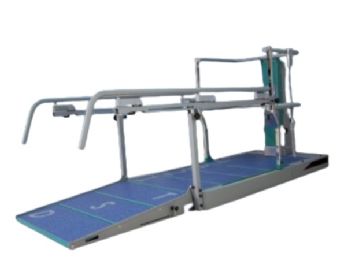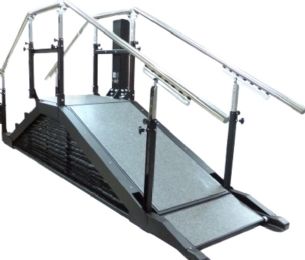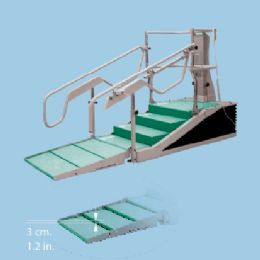









.jpg&newheight=260&quality=80)





.jpg&newheight=260&quality=80)









How do Training Stairs Help Athletes and Runners?
Steeper than most hills, most training staircases highlight an approximate 65% grade, which is why climbing
them makes an individual breathe faster to take in more oxygen and why this activity accelerates the heart
rate so quickly. Incorporating training stairs into your workout improves the maximum amount of oxygen
you are able to utilize during intense exercise and activity, teaching your body to more effectively use that
oxygen and quickly convert it to energy. The plyometric motion inherent in stair climbing increases strength
and stamina, while the constant balancing and shifting from one leg to the other strengthens the entire lower
body, reducing the risk of injury to these body areas in sports and running. Agility, coordination, speed and
cardiovascular health are all greatly improved through the regular use of training stairs.
How do Training Stairs Help After Injury, Illness or Surgery?
Whether an individual is attempting to recover from a temporary or long-term disability, climbing stairs or
walking up and down sloped surfaces is one of the biggest challenges in rehabilitation. Requiring the use of
very different muscles than regular walking, the ability to navigate stairs needs some very specialized
muscle training for those who are regaining mobility in their legs for a variety of reasons. Specially designed
training stairs are the best tool for this retraining, and while they are most often utilized in physical therapy
and rehabilitation facilities, they can also be used by individuals at home. Numerous physical health
conditions can be greatly improved with stair training exercises.
It is important to know basic stair climbing safety to avoid further injury or falls, especially when you are
attempting the climb with an injured leg. A great reminder for anyone with an injured leg is "up with the
good, down with the bad". This simply means that when an individual is ascending the stairs, the
unaffected leg ("the good") should be advanced first, placing it on the step above, followed by the injured
leg to the same step. When an individual is descending the stairs, the injured leg ("the bad") should be
advanced first, placing it on the step below, followed by the unaffected leg. If there is no rail to use for
support, then it is vitally important to know and understand the proper use of an assistive device, such as a
cane. When ascending, the cane should be placed on the upper step at the same time as the injured leg.
When descending, the cane should be placed on the lower step at the same time as the unaffected leg.
How do I Choose the Right Training Stairs?
Training stairs come in a wide variety of sizes, shapes and configurations. The type of training staircase
you choose will depend upon whether you are making your selection for a professional or home setting,
how much space is available and your budget. For professional physical therapy and rehabilitation facilities
and practices, what types of patients and injuries you see the most will determine what type of training
stairs are the most beneficial for your unique clientele. Single-sided stairs, adjustable stairs, space saver
stairs, stairs that allow users to climb up one side and then down the other without turning, and specialized
equipment that offer both stairs and sloped ramps are just a few of the choices available. Other options
include bariatric models that can accommodate up to 750 pounds, and convertible stairs where two
sections securely lock together to convert from a straight line design to a right angle configuration.
A good training staircase should help an individual to realize independence on using stairs anywhere more
quickly, achieving the mobility they need to enable them to return to their normal, daily life. Training stairs
should help individuals to experience a sense of accomplishment, helping them to move past the usual
fears, pains and frustrations associated with trying to learn how to negotiate regular staircases, steps and
slopes. Using training stairs in the recovery process after injury, surgery or illness is a safe and secure
method for helping patients realize their full ambulatory potential.
Hulet Smith, OT
Rehabmart Co-Founder & CEO
ck